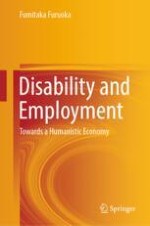2024 | OriginalPaper | Buchkapitel
5. What are the Determinants of the Disability Unemployment Gap?
verfasst von : Fumitaka Furuoka
Erschienen in: Disability and Employment
Verlag: Springer Nature Singapore
Aktivieren Sie unsere intelligente Suche, um passende Fachinhalte oder Patente zu finden.
Wählen Sie Textabschnitte aus um mit Künstlicher Intelligenz passenden Patente zu finden. powered by
Markieren Sie Textabschnitte, um KI-gestützt weitere passende Inhalte zu finden. powered by
